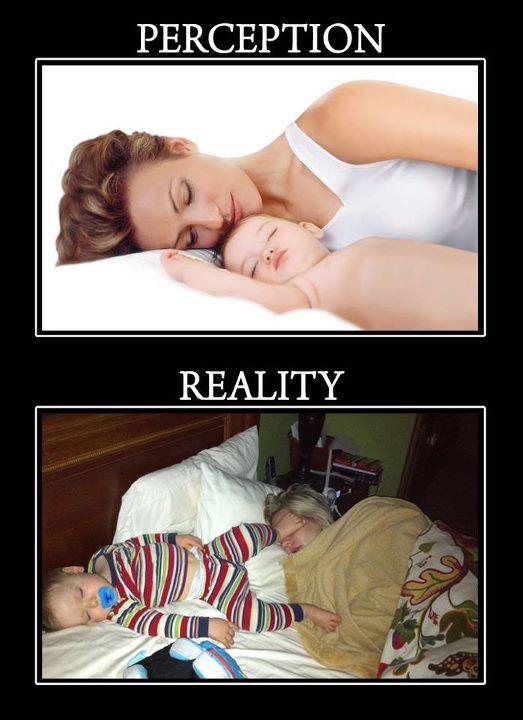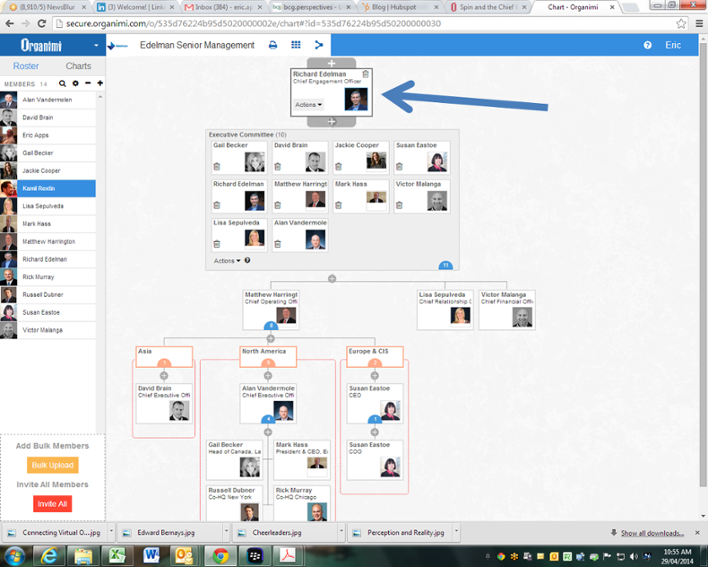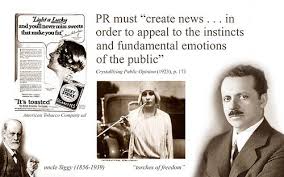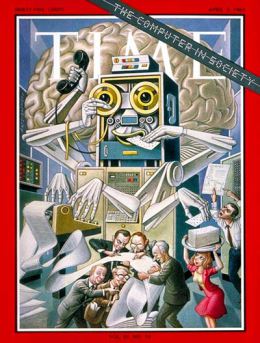What does “PR” mean to you? Public relations is the usual answer. What about “perception & reality”? In this blog we talk a bit about perception and reality in today’s workplace. We also highlight some of Organimi’s capabilities by creating and sharing the org chart for the senior management team of Edelman, one of the world’s largest and most successful public relations agencies.
Is Perception The Reality Of Your Organization?
We see tension between perception and reality everywhere we look.

In his recent blog post Is It HR’s Role to Support The Company or Its Employees Mark Salsbury reminds his readers that “perception is reality” as he explores the options for HR professionals to deliver enhanced value to their business organizations, and move away from traditional HR stereotypes.
His basic message is that the stereotypes themselves are so powerful the perceptions they create overwhelm workplace realities. He emphasizes that the needs of business for innovation in all areas of human capital management require these stereotypical moulds of HR to be broken.
In other words, HR professionals need to lead the change they want to see in their organizations, and not be complacent with perceptions of their role as “the department where good ideas go to die”, the “pink ghetto”, the “people who say no”, the “evil HR directors” and other perjorative labels that still cling to far too many HR departments.
Perception and reality were also very much at play this week in Kris Dunn’s blog post Guide to Getting Promoted, which offers some constructive advice, and good humour, for those looking to climb the corporate ladder in today’s competitive business environment.
His advice that Gen Yrs “buy new jeans” nicely encapsulates the notion that employees looking to move ahead (and presumably those looking to stay ahead….or simply stay in the game) must be ready to refresh their look, as much as they refresh their skills. Why? Sad as it may seem to some, perception is reality in the eyes of those charged with presenting a forward looking organizational face. Perception is a huge driver of decisions at all levels. This does not mean ageism is acceptable, by any means, it simply means that there are huge perception considerations driving the choices managers make about who will advance in their organizations. What it means is that we’re really all in public relations as relates to the promotion of ourselves and our careers in our organizations – and some of us do it a whole lot better than others.
The Perception Makers: The Edelman Senior Management Organimi Org Chart
This focus on the power of perception does not confine itself to the HR department or the career prospects of front line employees either. This week, in a video interview with McKinsey & Co, Richard Edelman of the Edelman agency, one of the dominant public relations brands for the world’s largest organizations, was reviewing the results of the 2014 Edelmann Trust Barometer, their annual trust and confidence survey.
His message focused on perception; specifically the overwhelmingly negative perception reflected in the significant decline in trust (now at record low levels) for governments, as well as the flat-lining trust levels of individuals with business organizations.
Edelman’s message is about how leaders need to work to regain the trust of their employees and the public generally by stepping up to and accepting their role as “Chief Engagement Officers”. He offers some great advice, based on Edelman’s research, and nicely summarized in the video interview.
The report also delves deeply into the topic of employee engagement noting that survey research across thousands of clients concludes that “regular employees are the most credible voices on multiple topics, including the company’s work environment, integrity, innovation and business practises.”
In the eyes of external stakeholders, then, and whether this reflects perception or reality, the employee voice is a powerful force to promote more authentic conversations with external stakeholders about your organization.
So if you had to draw up an org chart of the “engagement officers” in your organization, who would they be?
One of the great things about Organimi is that it makes it so much easier – for everyone – to tap into this vein of employee influence within organizations, first and foremost by creating a platform everyone can access and use to better understand each other within the organization.
Since much of this discussion is about public relations, for example, we went looking for firms in the “public relations” business.
As it turns out, Richard’s firm, New York City based Edelman, is by far largest private sector agency by way of billings and its clients include such global heavyweight organizations as straZeneca, eBay, General Electric, Hewlett Packard, Microsoft, Royal Dutch Shell, Starbucks Coffee Co. and Unilever.
Richard’s advocacy of a “Chief Engagement Officer”, and the Trust Barometer itself, are great vehicles for PR, self-promotion and reinforcement of the “thought leadership” perceptions that make organizations like Edelman so compelling to their clients. Is it perception? Or is it reality? Either way, looking at the revenue numbers, it works! Edelman’s Trust Barometer gets it in the news, with something to talk about to drive engagement among its clients and within its ranks.
Using the information about Edelman we found here we were able to declare Richard Edelman the Chief Engagement Officer. We’re not sure who else is on that team, but it is easy enough to create their group, using Organimi’s easy to use organizational design tools.
Using Organimi’s build and share tools, we’ve put together the org chart for Edelman’s senior management team, from the chief engagement officer down, right here.

The question might now be, who on that excecutive committee org chart is going to take ownership of the employee engagement issue at Edelman?
Feed That Perception With Some Bernays
You can great pretty philosophical about perception and its relationship to reality. In a recent Huffington Post article, Time To Get Real: The Riddle of Perception, Deepak Chopra did just that.
Edward Bernays is not likely a household name to most people. But you’ll likely be surprised at how much his work may have influenced your world. He was in many ways the architect of the business of Edelman and the many other firms on that list, through the use of public relations.
I had no idea, until I spent a few hours a couple of weeks ago watching an amateur theater production of Dinner with Goebbels, a recently mounted production of playwright Mark Leith’s (“I had a play inside me and I needed to get it out”) first play.
The play features an imagined dinner, hosted by Edward Bernays, the self-styled father of public relations, and with two of his more famous (or perhaps infamous) acolytes as invited guests: Joseph Goebbels (the architect of Hitler’s Nazi propoganda machine), and Karl Rove (referred to as “the architect” he crafted the “war on terror”). You can catch a snippet of the play in workshop here.
The play was enntertaining, and the all female cast made for an interesting take on these three characters. But it was the story-line about Edward Bernays himself that particularly struck with me. An Austrian-American Jew, he was the cousin of Sigmund Freud. By successfully combining and applying principles of psychoanalysis and crowd psychology, with his WW I experience as an influential advisor to Woodrow Wilson’s, Bernays pioneered the field of “Public Relations” in America.

By combining these skills he amassed a large number of A-list clients in the private sector and government, as well as training generations of publicists who followed him.
He also described this field and its workers in his 1928 book Propaganda (one of the early bibles of PR) as “an invisible government which is the true ruling power of our country. …We are governed, our minds are molded, our tastes formed, our ideas suggested, largely by men we have never heard of.”
Wow! For those of you who think this is quaint nineteenth century stuff, it appears we continue to be very much under the thrall of the PR image making that surrounds as all, as research this week on the use of cosmetics by women reported in the blog post Women Wear Too Much Makeup Because They Mistakenly Think Men Like It shows us.
Changing Perceptions Of Your Workplace Reality
In 1965, with computers in their infancy amidst the “golden age” of the North American middle class, a Time magazine cover proclaimed that in the future “the computer will allow man to return to the Hellenic concept of leisure” meaning a relaxed life of contemplation, sport and pleasure.
That is one perception that definitely does not jive with today’s reality! Our lives these days seem much more consumed by attempting (and usually failing) to manage our work-life balance in a world where technology has blurred the dividing line between work and leisure, and commuting times for many seem to be going up, up, up as pay packets do flat, flat, down.

This week in Atlantic The Mind Does Not Belong In A Cubicle Laura Smith (commenting on Cubed: A Secret History of the Workplace, released this week by Nikil Saval) writes about how our workspaces – our cubicle culture – has strayed far from the environments our brains evolved in — the outdoors which were our original “workspaces”.
She highlights the disconnect between our perceptions of work and our workplace realities, noting that “we consider it inhumane to keep a gorilla in an indoor, concrete environment with no exposure to greenery or anything resembling its natural habitat, and yet we put ourselves in these environments all the time”.
But she also talks about progressive change – such as that in office design – referring to Patricia Fox, a London-based designer, who “premiered her rooftop office featuring lush greenery, WiFi, tablet charging stations, and a tea wall where office workers can pick their own fresh teas. She highlighted the rejuvenation that working in this kind of environment could provide and told me that she sees the model as scalable. Offices like hers could conceivably be built anywhere with a roof that could structurally support a garden.”
How awesome would that be? Who will take ownership of those changes in your organization? Who is going to create the rooftop tea and yoga garden?
Perception, Reality and the Virtual Organization
Okay, so getting outside may not be realistic, or even desireable. But reimagining and rearchitecting workplaces and workspaces is realistic, and in fact it is already well under way.
As you may have already seen from our white paper, virtual organizations are becoming more and more common place. This trend is impacting more and more employee relationships (more and more virtual, part-time, remote, hoteled, telecommuting, flex-hours, and other “non-present” working styles). It is also extending (by definition) to more and more customers and marketplaces as employee work styles within both the supply and demand chains change.
This is a good thing. Perception is reality. The technology cloud makes it easier and easier for all of us to alter the physical aspects of our workspaces, at least getting more of a perception of control and autonomy — and maybe even a closer sense to our natural selves – while continuing to pursue the real work needed to get our jobs done.

For more and more people, it is simply easier and more effective to conduct more and more business, whether inside the organization or with suppliers and customers around it, virtually, and to construct new networks and connections that extend across them to facilitate this process.
So our question for the HR department, team managers and innovators out there looking to change the dynamics of employee engagement in the workplace is….who is your chief engagement officer, and what tools are you giving them and everyone else to change at least the perception – if not the reality – of your day to day workplace, as it continues to evolve and disconnect more and more people from their natural workspaces and each other?

If the answer is “not much” or “I don’t really know” maybe it’s time to try something new for a change….to try on some new jeans.
At Organimi, we like to think of ourselves as part of the glue that enables this process of bridging the gaps between perception and reality for our clients in their changing workspaces.
Organimi is designed to help everyone inside the organizations – from the Chief Engagement Officer on down to the shop floor – get to know everybody in their organization better, and to make it easy for every individual in the organization to develop their profile to make those connections happen, faster and easier…whether they choose to buy a new pair of jeans…or decide to stick with their same old pair.
If it is the case, as Edelman research suggests, that senior executives need to rebuild trust with their employees to re-engage their workforces, and that those who do will tap into a great reservoir of talent that can be directed to drive the business forward, they need tools. They can only do this by changing the way they are interacting with their employees…and as a starting point getting to know a lot more about them.
For fun, why don’t you see how easy it is by setting up your own org chart and designate your Chief Engagement Officer.
As always, thanks for reading.
The Organimi Team

